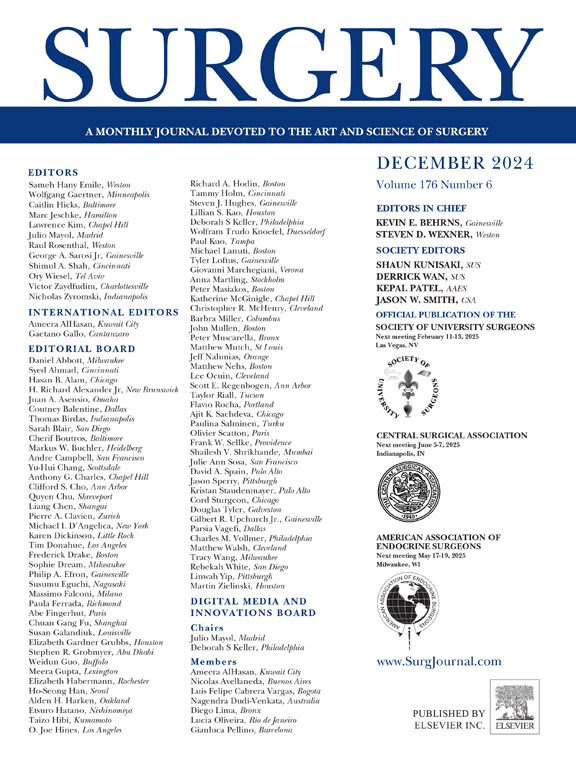Blood product use in emergency resuscitative thoracotomy: A nationwide analysis
IF 3.2
2区 医学
Q1 SURGERY
引用次数: 0
Abstract
Background
Emergency resuscitative thoracotomy survival rates range widely depending on the mechanism of injury and signs of life at presentation. Given ongoing shortages of blood products, we sought to examine blood product use across this patient population and corresponding survival.
Methods
We identified patients in the American College of Surgeons-Trauma Quality and Improvement Program (2017–2019) undergoing an emergency resuscitative thoracotomy within 30 minutes of hospital arrival. The primary outcome was the number of packed red blood cells units transfused within 4 hours. Secondary outcomes were the number of units of plasma and platelets transfused and overall survival. The number of uvnits of blood products transfused to observe 1 survivor was calculated by dividing the total number of units transfused by the number of survivors.
Results
A total of 1,231 patients were included. The median age was 36, 84.6% were male, 69.2% had penetrating trauma, and 40.4% presented with signs of life. The overall survival was 7.3%, and the median number of packed red blood cells transfused within 4 hours was 3.7 [interquartile range, 1.0–9.4]. Patients with penetrating trauma and signs of life had a survival rate of 17.1% and received a median of 8.0 [3.0–17.0] packed red blood cells. Patients presenting with blunt trauma and no signs of life had a 1.1% survival and received a median of 2.0 packed red blood cells [0.9–6.0]. For patients with stab wounds arriving with signs of life, a total number of 30 packed red blood cell units was transfused to observe 1 survivor. For blunt trauma without signs of life, a total of 485 units were transfused to observe 1 survivor.
Conclusion
Given the near futility of emergency resuscitative thoracotomy in patients with blunt trauma presenting with no signs of life, coupled with the ongoing national shortage of blood, we recommend allocating transfusion resources to patients with penetrating trauma and to patients with blunt trauma presenting with signs of life.
求助全文
约1分钟内获得全文
求助全文
来源期刊

Surgery
医学-外科
CiteScore
5.40
自引率
5.30%
发文量
687
审稿时长
64 days
期刊介绍:
For 66 years, Surgery has published practical, authoritative information about procedures, clinical advances, and major trends shaping general surgery. Each issue features original scientific contributions and clinical reports. Peer-reviewed articles cover topics in oncology, trauma, gastrointestinal, vascular, and transplantation surgery. The journal also publishes papers from the meetings of its sponsoring societies, the Society of University Surgeons, the Central Surgical Association, and the American Association of Endocrine Surgeons.
 求助内容:
求助内容: 应助结果提醒方式:
应助结果提醒方式:


